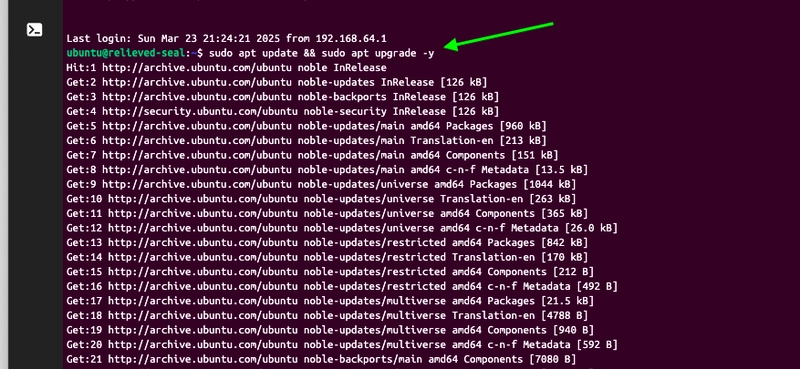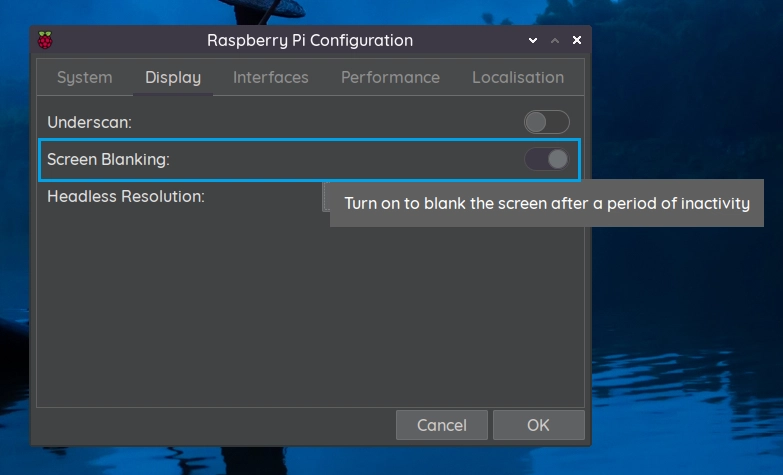Fidenza's Role in Cyberwar: Art, NFTs, and Cybersecurity Convergence
Abstract This post explores the intriguing intersection of art, blockchain technology, and cybersecurity through the lens of the Fidenza generative art collection. Created by Tyler Hobbs, Fidenza is much more than a celebrated NFT art project—it represents a pivot point in the cyberwar landscape. We examine its background, core concepts, real-world applications, challenges, and future implications. Along the way, we highlight key technical insights, link to authoritative resources, and provide detailed tables and bullet lists for a clear view into this complex yet accessible topic. Introduction In the digital age, the convergence of art, non-fungible tokens (NFTs), and threat intelligence is creating a unique cyber frontier. Fidenza, a recognized generative art collection created by Tyler Hobbs, has captured attention not only for its intricate beauty but also for its unexpected role in discussions of cybersecurity and cyberwarfare. NFT communities have expanded rapidly, resulting in decentralized economies, innovative financial models, and even potential digital battlegrounds. For a detailed view of Fidenza and its evolving role, check out the Original Article on Fidenza's Role in Cyberwar. This blog post is designed for technical professionals, digital artists, and blockchain enthusiasts alike. We will explore the historical context, the convergence of art with emerging digital technologies, and the technical and regulatory challenges associated with safeguarding these digital assets. Our aim is to provide clear and scannable insights that both humans and search engine crawlers will appreciate. Background and Context The Genesis of NFT Art and Fidenza NFTs emerged as a revolutionary method of tokenizing digital art and collectibles. The foundation of NFT technology lies in blockchain—a decentralized digital ledger—that records unique transactions and ownership claims. Fidenza is one such generative art project that leverages algorithms to create diverse, complex compositions unique to every token. By releasing the series on platforms like Art Blocks, Fidenza not only redefined digital aesthetics but also contributed to a broader debate on the value and security of NFTs. For readers interested in learning more about the broader context of NFTs, resources such as Why Are NFTs Valuable and History of NFTs offer excellent background information. Cybersecurity in the NFT Ecosystem Blockchain technology is not immune to cybersecurity concerns. The decentralization that empowers NFTs also presents new attack surfaces—making them attractive targets in cyberwarfare scenarios. From censorship-resistant information to the potential harboring of malicious code in smart contracts, the NFT space intersects with cybersecurity in unprecedented ways. For further details on these interconnections, read more about Blockchain and Cybersecurity and Smart Contracts on Blockchain. Core Concepts and Features Fidenza’s core appeal goes beyond aesthetics. Here are the primary elements that define its role in the emerging digital battlefield: 1. Decentralization and Censorship Resistance Decentralized Ownership: Fidenza’s blockchain-based design ensures that ownership is recorded across a global network, resistant to single points of failure. Censorship Resistance: The platform inherently defies central control, enabling voices and art to persist even under oppressive regimes. 2. Financial Anonymity and Transaction Obfuscation Blockchain’s pseudonymous nature assures that while art transactions are transparent, the identities behind them remain concealed. This quality is highly prized in geopolitical cyberwarfare, where silent financial channels can fund dissent without detection. 3. Potential Security Vulnerabilities: The Trojan Horse Scenario Although primarily celebrated for artistic beauty, NFTs like Fidenza can hypothetically harbor vulnerabilities such as malicious code. In this context, rigorous smart contract audits and comprehensive security protocols are necessary. The idea of a “Trojan Horse” in digital art underlines the importance of continuous cybersecurity monitoring within the NFT ecosystem. 4. Blockchain Networks as Critical Infrastructure Blockchain networks underpinning NFT transactions have become critical digital infrastructure, making them prime targets for cyberattacks. Securing these networks is essential, not only for art collectors but also for broader digital rights and financial ecosystems. 5. Influence on Psychological Operations The cultural significance of NFTs means they can be co-opted as tools for propaganda and psychological operations in cyber conflicts. Their wide public exposure and symbolic weight make them useful platforms for influencing public opinion and socio-political discourse. Applications and Use Cases The interplay between art, NFTs, and

Abstract
This post explores the intriguing intersection of art, blockchain technology, and cybersecurity through the lens of the Fidenza generative art collection. Created by Tyler Hobbs, Fidenza is much more than a celebrated NFT art project—it represents a pivot point in the cyberwar landscape. We examine its background, core concepts, real-world applications, challenges, and future implications. Along the way, we highlight key technical insights, link to authoritative resources, and provide detailed tables and bullet lists for a clear view into this complex yet accessible topic.
Introduction
In the digital age, the convergence of art, non-fungible tokens (NFTs), and threat intelligence is creating a unique cyber frontier. Fidenza, a recognized generative art collection created by Tyler Hobbs, has captured attention not only for its intricate beauty but also for its unexpected role in discussions of cybersecurity and cyberwarfare. NFT communities have expanded rapidly, resulting in decentralized economies, innovative financial models, and even potential digital battlegrounds. For a detailed view of Fidenza and its evolving role, check out the Original Article on Fidenza's Role in Cyberwar.
This blog post is designed for technical professionals, digital artists, and blockchain enthusiasts alike. We will explore the historical context, the convergence of art with emerging digital technologies, and the technical and regulatory challenges associated with safeguarding these digital assets. Our aim is to provide clear and scannable insights that both humans and search engine crawlers will appreciate.
Background and Context
The Genesis of NFT Art and Fidenza
NFTs emerged as a revolutionary method of tokenizing digital art and collectibles. The foundation of NFT technology lies in blockchain—a decentralized digital ledger—that records unique transactions and ownership claims. Fidenza is one such generative art project that leverages algorithms to create diverse, complex compositions unique to every token. By releasing the series on platforms like Art Blocks, Fidenza not only redefined digital aesthetics but also contributed to a broader debate on the value and security of NFTs.
For readers interested in learning more about the broader context of NFTs, resources such as Why Are NFTs Valuable and History of NFTs offer excellent background information.
Cybersecurity in the NFT Ecosystem
Blockchain technology is not immune to cybersecurity concerns. The decentralization that empowers NFTs also presents new attack surfaces—making them attractive targets in cyberwarfare scenarios. From censorship-resistant information to the potential harboring of malicious code in smart contracts, the NFT space intersects with cybersecurity in unprecedented ways.
For further details on these interconnections, read more about Blockchain and Cybersecurity and Smart Contracts on Blockchain.
Core Concepts and Features
Fidenza’s core appeal goes beyond aesthetics. Here are the primary elements that define its role in the emerging digital battlefield:
1. Decentralization and Censorship Resistance
- Decentralized Ownership: Fidenza’s blockchain-based design ensures that ownership is recorded across a global network, resistant to single points of failure.
- Censorship Resistance: The platform inherently defies central control, enabling voices and art to persist even under oppressive regimes.
2. Financial Anonymity and Transaction Obfuscation
Blockchain’s pseudonymous nature assures that while art transactions are transparent, the identities behind them remain concealed. This quality is highly prized in geopolitical cyberwarfare, where silent financial channels can fund dissent without detection.
3. Potential Security Vulnerabilities: The Trojan Horse Scenario
Although primarily celebrated for artistic beauty, NFTs like Fidenza can hypothetically harbor vulnerabilities such as malicious code. In this context, rigorous smart contract audits and comprehensive security protocols are necessary. The idea of a “Trojan Horse” in digital art underlines the importance of continuous cybersecurity monitoring within the NFT ecosystem.
4. Blockchain Networks as Critical Infrastructure
Blockchain networks underpinning NFT transactions have become critical digital infrastructure, making them prime targets for cyberattacks. Securing these networks is essential, not only for art collectors but also for broader digital rights and financial ecosystems.
5. Influence on Psychological Operations
The cultural significance of NFTs means they can be co-opted as tools for propaganda and psychological operations in cyber conflicts. Their wide public exposure and symbolic weight make them useful platforms for influencing public opinion and socio-political discourse.
Applications and Use Cases
The interplay between art, NFTs, and cybersecurity has resulted in innovative applications across several domains:
Communication in Censorship Repressive Environments
Case Example: Dissident groups have begun to use NFT-based platforms to disseminate information without state interference. The censorship resistance built into blockchain platforms ensures that channels of communication remain open, even under authoritarian regimes. Fidenza, with its decentralized nature, illustrates how art can double as a tool for secure, anonymous communication.
Funding Cryptographic Defenses
Case Example: Financial obfuscation in blockchain transactions allows organizations to move capital anonymously. This advantage is critical when funding cybersecurity initiatives or philanthropic endeavors aimed at fostering freedom of expression. By using NFTs as collateral or as secure fundraising tokens, groups can bypass conventional banking restrictions.
Innovative Digital Identity
Case Example: The complex, unique nature of generative art like Fidenza can be repurposed to create digital identifiers that may help secure digital identities in an era of rampant cyber threats. The underlying algorithmic uniqueness offers an alternative method for verifying authenticity and ownership on digital platforms.
Below is a table that summarizes key features and their potential effects on the cyberwar ecosystem:
| Core Feature | Function | Potential Cyberwar Implication |
|---|---|---|
| Decentralization | Distributed ledger technology | Resists censorship, offering secure channels for dissident messaging |
| Pseudonymous Transactions | Uses cryptographic techniques to hide identities | Enables anonymous funding and secure financial obfuscation |
| Smart Contract Vulnerabilities | Programmable and auditable code | Risk of malicious code injection, requiring enhanced audits |
| Cultural Symbolism | High aesthetic and ideological value | Potential for propaganda and psychological operations |
Challenges and Limitations
Despite its potential, the convergence of NFT art and cybersecurity is fraught with challenges:
- Security Audits: Not all NFT projects undergo rigorous security assessment. The hypothetical risk of “malicious code” remains a concern, underscoring the need for ongoing audits.
- Regulatory Uncertainty: The rapid evolution of NFTs has outpaced many governments’ regulatory frameworks. International regulatory cooperation is still in its infancy.
- Scalability: While blockchain offers decentralization, network congestion and high transaction fees can hinder mass adoption.
- Technological Vulnerabilities: Even though blockchain is considered secure, vulnerabilities in smart contracts or underlying protocols can expose users to risks.
- Cultural Exploitation: The symbolic power of NFTs may prompt their manipulation in psychological operations. As such, the public needs to be aware of potential propaganda tactics related to NFT art.
Bullet List: Key Challenges
- Security Auditing: Inconsistent smart contract reviews may lead to vulnerabilities.
- Regulatory Challenges: Lack of global standards creates uncertainty.
- Scalability Issues: Network congestion and high gas fees hinder transaction speed.
- Exploitation Risks: Cultural symbolism can be weaponized for propaganda.
Future Outlook and Innovations
The intersection between art, NFTs, and cybersecurity is still evolving. Here are some trends and potential innovations to watch:
Enhanced Security Protocols
Future developments will see more advanced security measures, including:
- Automated Audits: The integration of AI-driven testing to identify vulnerabilities in smart contracts.
- Layer 2 Solutions: Scalability enhancements such as Layer 2 protocols will likely reduce network congestion and lower transaction fees.
International Regulatory Collaboration
Regulators around the world are beginning to acknowledge the need for global standards. This collaboration could foster:
- Standardization: More consistent regulatory frameworks for NFT transactions.
- Transparency Measures: Enhanced public awareness programs regarding the benefits and risks associated with NFTs.
Evolution of Digital Identity and Propaganda Resistance
As blockchain technology matures, we may see:
- Robust Digital Identities: Unique art signatures that serve as secure digital identifiers.
- Data Sovereignty: New models for digital ownership that empower creators and provide enhanced privacy protections.
Dev.to Community Insights
Further insights into these trends come from discussions in the open-source community. Articles such as Empowering Open Source: The License Token Revolution and Navigating the Complex World of Open Source Project Sponsorship provide valuable perspectives on innovative funding models and the role of financial backing in sustaining digital ecosystems. Additionally, Understanding Open Source Developer Support Networks and Sustaining Open Source: The Role of Financial Backing serve as guides for navigating new scalability and transparency techniques, which are directly applicable to the NFT and cybersecurity space.
Summary and Conclusion
Fidenza is more than a generative art phenomenon—it is a marker for the future of digital asset interactions and cyberwarfare. Its decentralized, algorithm-driven approach encapsulates the double-edged sword of modern blockchain technology: unmatched innovation paired with complex cybersecurity challenges. As the digital art ecosystem evolves, so too does the need for robust security protocols, regulatory oversight, and creative innovation.
In summary:
- Fidenza's Role: It demonstrates how art and technology converge to reshape cyber conflict domains.
- Digital Security: Blockchain’s pseudonymous and immutable structure brings both opportunities—like censorship resistance—and challenges such as potential vulnerabilities in smart contracts.
- Future Trends: With new Layer 2 solutions, automated security measures, and international regulatory efforts, the future for NFTs in both art and cyberwarfare looks promising.
By understanding the interplay of art, NFTs, and cybersecurity, stakeholders—from digital artists to cybersecurity professionals—can better navigate this emerging landscape. As the digital revolution continues to transform creative expression and cybersecurity strategy in equal measure, projects like Fidenza serve as both an inspiration and a cautionary tale.
For those seeking further information on the technical underpinnings and potential cybersecurity implications of NFTs, the links to Blockchain and Cybersecurity and NFTs in Cyberwar Scenarios are invaluable. Additionally, exploring Smart Contracts on Blockchain provides technical insights into how developers can safeguard these technologies.
As our digital lives expand and intertwine with art and culture, the evolution of projects like Fidenza will undoubtedly influence not just art markets but also the strategies employed in today's cyberwarfare. By keeping current with emerging trends and innovations, we can ensure that technology serves as a force for good—a tool for creativity, resilience, and secure communication.
Key Terms:
- NFT (Non-Fungible Token): Unique digital asset verified using blockchain technology.
- Blockchain: Decentralized ledger technology that supports transparency and immutability.
- Smart Contracts: Self-executing contracts with the terms directly written in code.
- Cybersecurity: Practices designed to protect digital assets against cyber threats.
Related Links for Further Reading:
Useful Dev.to Posts:
- Empowering Open Source: The License Token Revolution
- Navigating the Complex World of Open Source Project Sponsorship
- Understanding Open Source Developer Support Networks
- Sustaining Open Source: The Role of Financial Backing
In conclusion, the story of Fidenza underscores a critical turning point in the convergence of art and technology. It reminds us that even the most aesthetically compelling digital creations carry significant technological responsibilities—and that the future of cybersecurity will be inseparable from the evolution of digital art. As we continue to explore these intersections, staying informed and vigilant will be key to harnessing technology for both creative innovation and secure digital interactions.









































































































































































![[The AI Show Episode 142]: ChatGPT’s New Image Generator, Studio Ghibli Craze and Backlash, Gemini 2.5, OpenAI Academy, 4o Updates, Vibe Marketing & xAI Acquires X](https://www.marketingaiinstitute.com/hubfs/ep%20142%20cover.png)



























































































































![[FREE EBOOKS] The Kubernetes Bible, The Ultimate Linux Shell Scripting Guide & Four More Best Selling Titles](https://www.javacodegeeks.com/wp-content/uploads/2012/12/jcg-logo.jpg)



![From drop-out to software architect with Jason Lengstorf [Podcast #167]](https://cdn.hashnode.com/res/hashnode/image/upload/v1743796461357/f3d19cd7-e6f5-4d7c-8bfc-eb974bc8da68.png?#)






































































































.png?#)




.jpg?#)
































_Christophe_Coat_Alamy.jpg?#)








































































































![Rapidus in Talks With Apple as It Accelerates Toward 2nm Chip Production [Report]](https://www.iclarified.com/images/news/96937/96937/96937-640.jpg)








































































































































